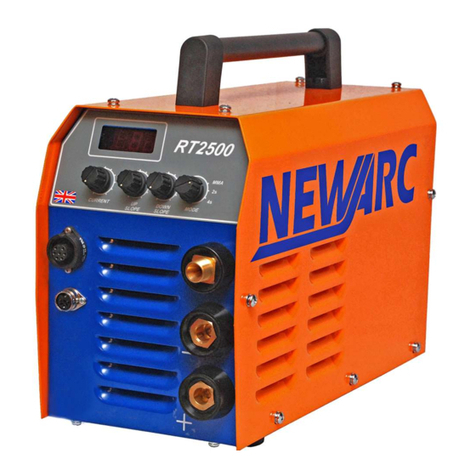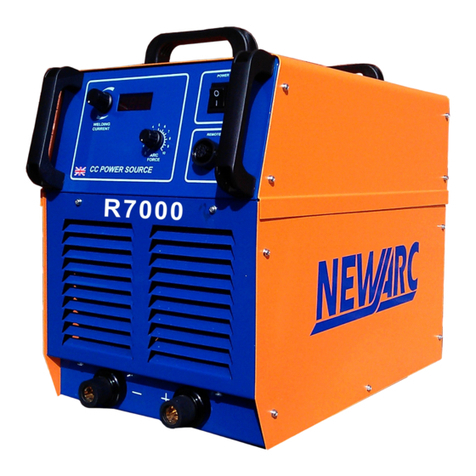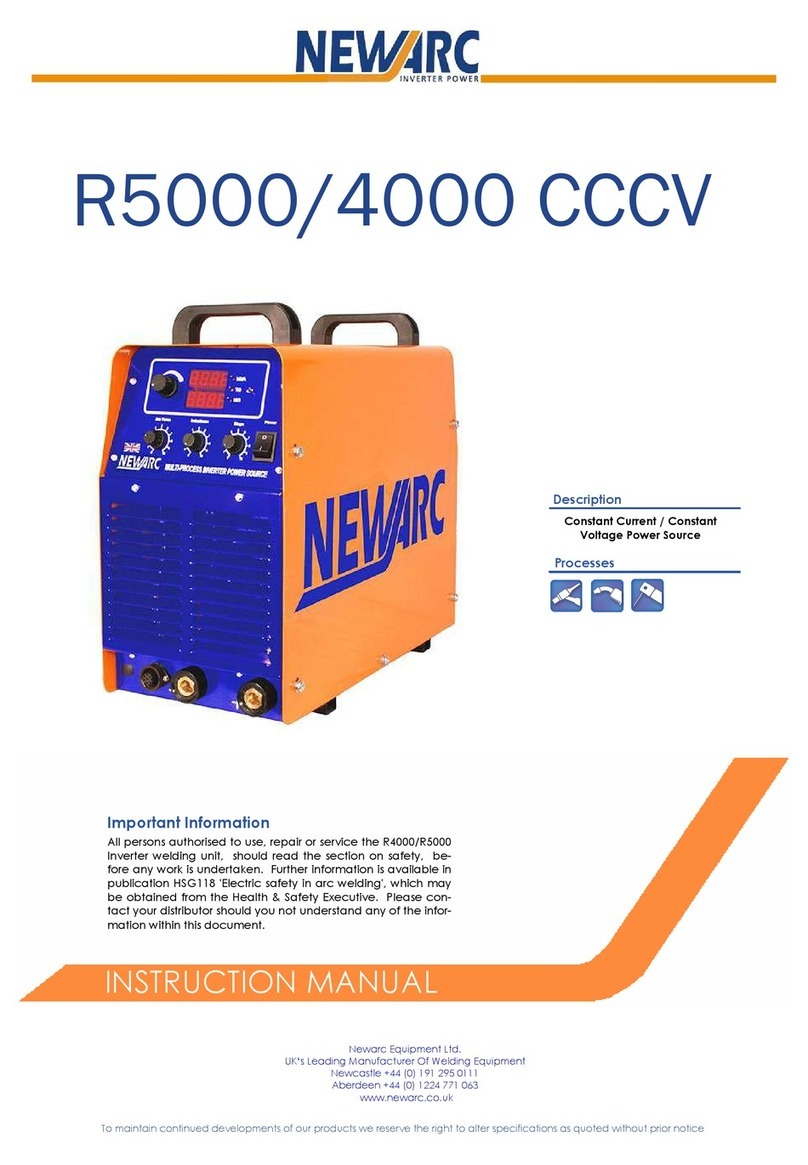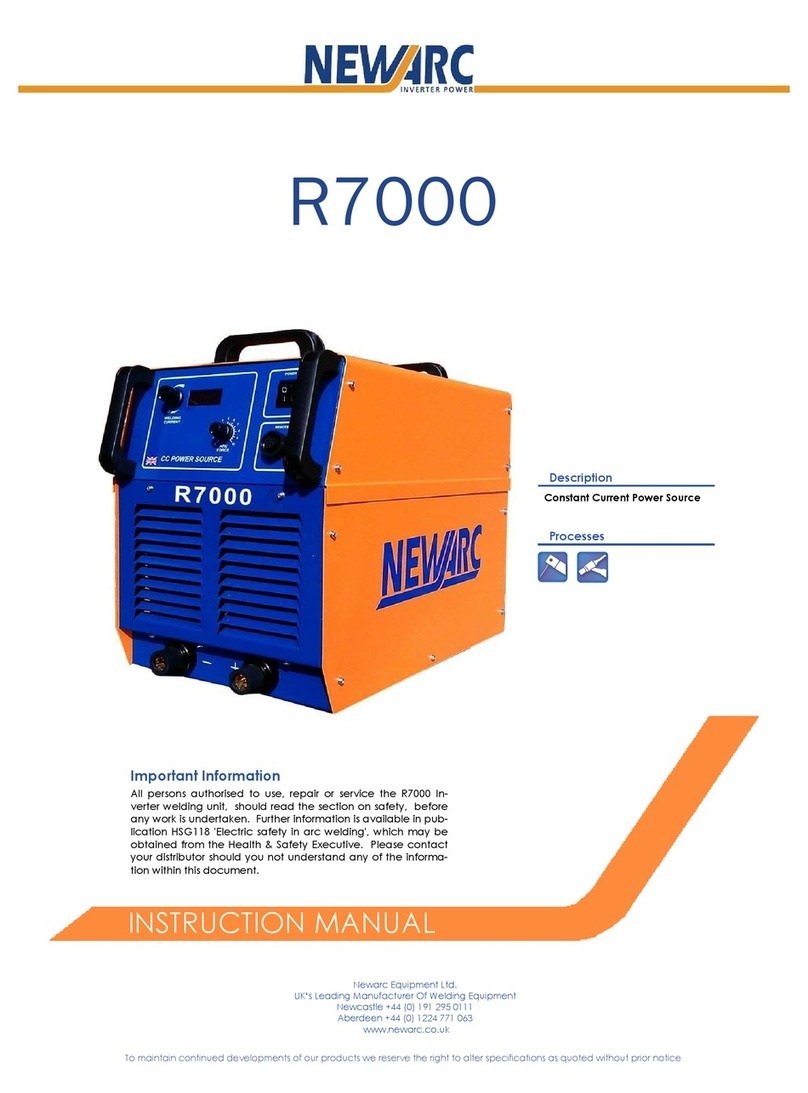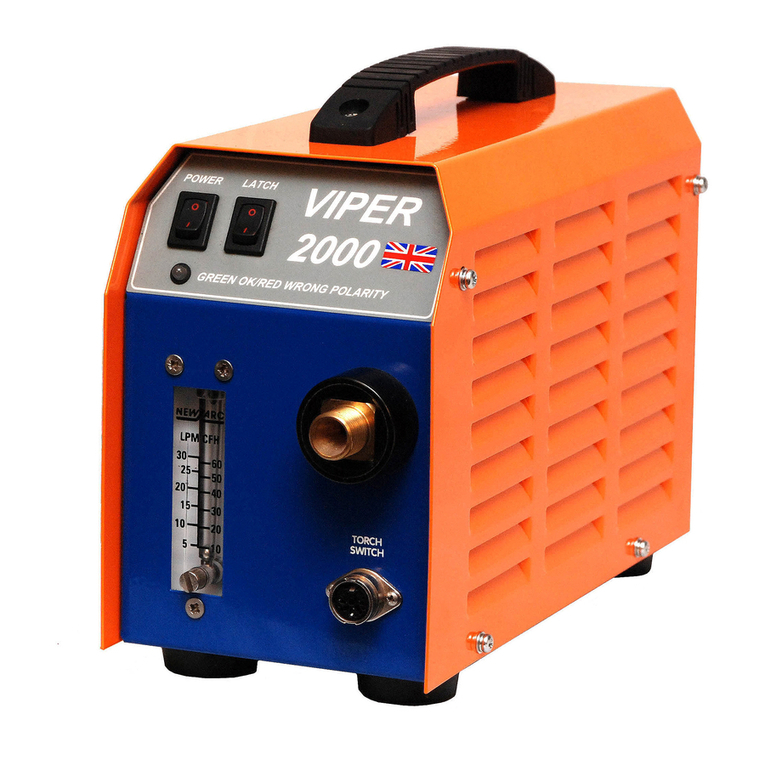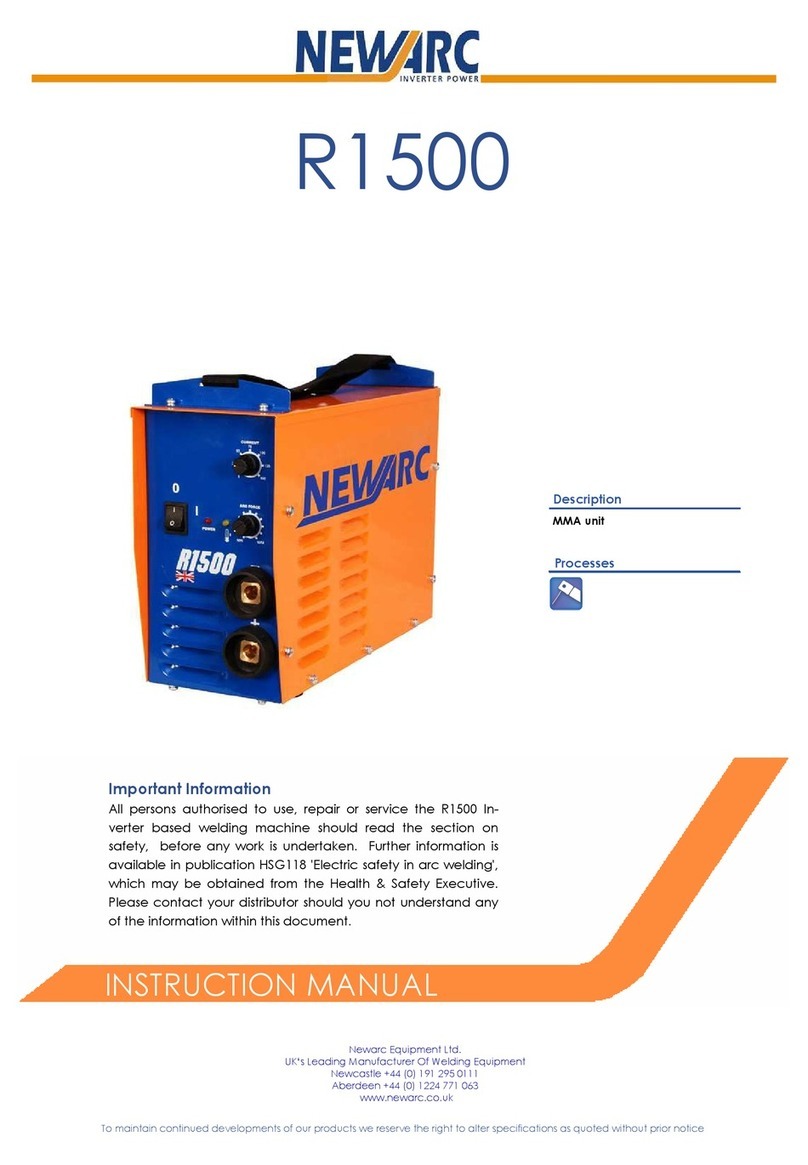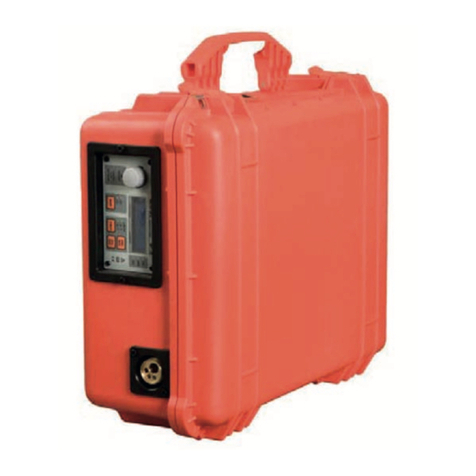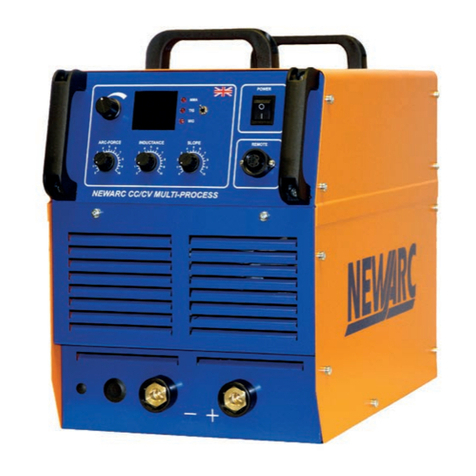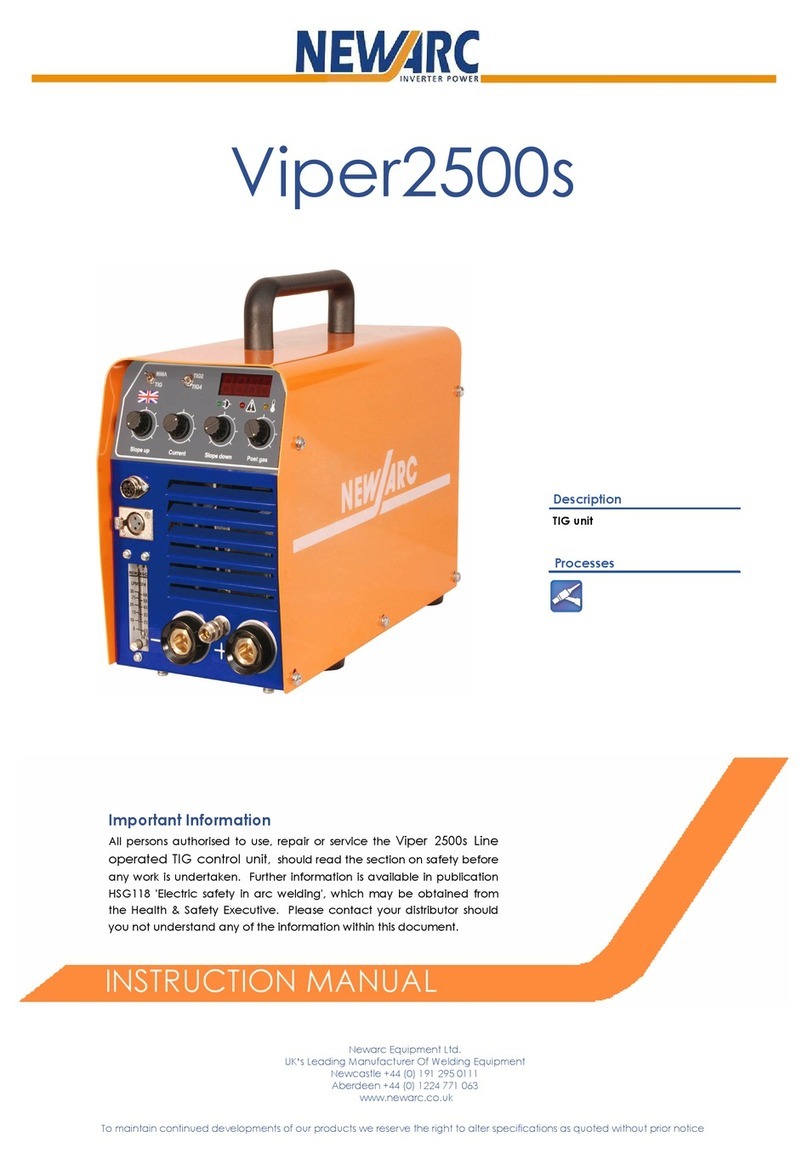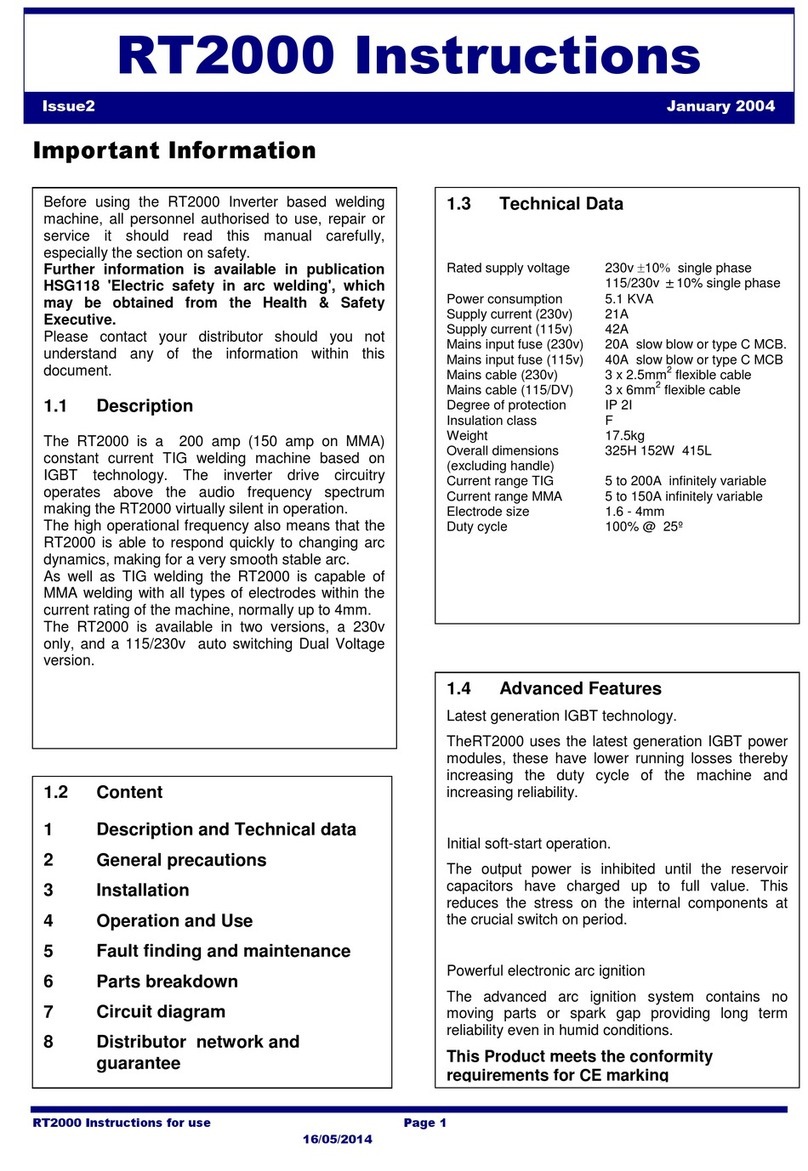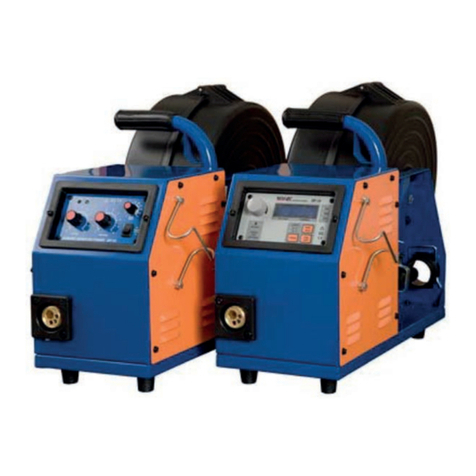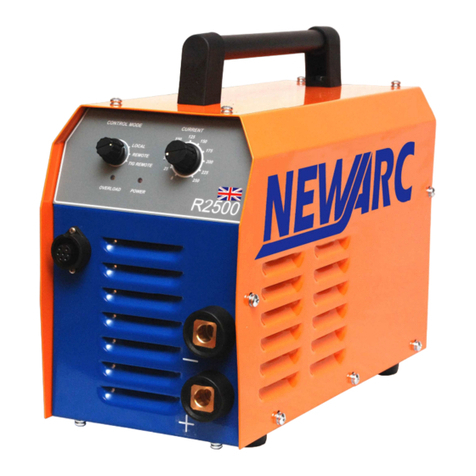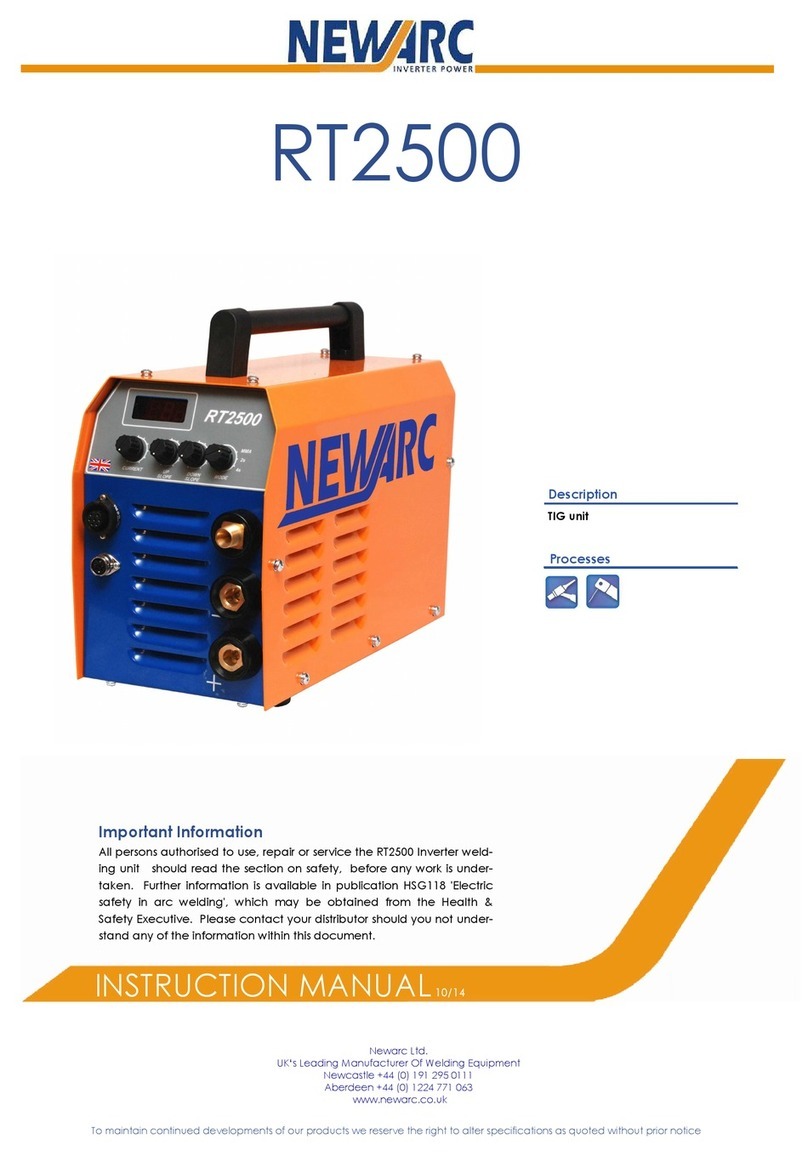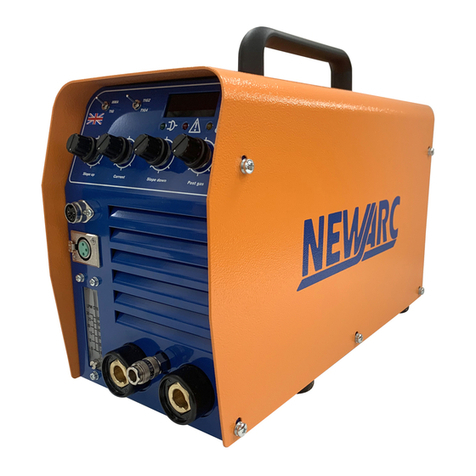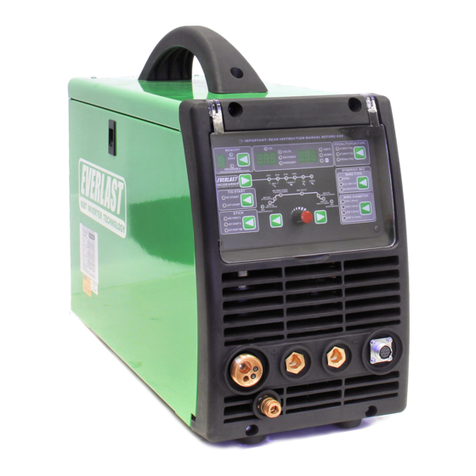VIPER2000
4
ECTION 1 — AFETY
1.1 ervicing Hazards
Fire and Explosions
Pay attention to fire and safety regulations in force at the
welding site.
•
Remove all flammable or combustible materials from the
welding area and the immediate vicinity.
•
Suitable fire fighting equipment must always be present
where welding is undertaken.
•
Be aware that a fire risk is present for a considerable time
after welding operations have ceased because of sparks
and hot slag etc. Take suitable precautions when you
have finished welding.
•
Take care when welding containers that have held flam-
mable or combustible material, these should have been
specially cleaned before being made available to the
welder. If in doubt do not proceed.
Burns
Be aware that burns may be the result of the heat involved in
the welding process, welding spatter or the Ultra Violet Ra-
diation given off by the arc itself.
•
Wear suitable flame retardant clothing over all your body.
•
Wear protective gauntlets designed for welding use.
•
Wear a welding facemask fitted with the correct filter
shade suitable for the current at which you will be weld-
ing.
•
Avoid wearing oily or greasy clothing as a spark may ig-
nite them. Where possible ensure that a suitable first aid
kit and a first aid person qualified in the treatment of
burns are available nearby.
Fumes
Welding operations give off harmful fumes that are hazard-
ous to your health.
•
Make sure the welding area is well ventilated. Use suit-
able fume extractors or exhaust fans if necessary.
•
If the ventilation is not suitable then breathing apparatus
may have to be used.
•
Do not weld plated metals or metals which contain Lead,
cadmium, Zinc, Mercury or Beryllium unless you are wear-
ing breathing apparatus approved for the purpose.
Electric hock
•
Do not touch live electrical parts.
•
Do not work in wet or excessively humid areas.
•
Avoid touching the work piece whilst welding.
•
Keep your clothing and body dry.
The safe handling of gas cylinders
The VIPER2000 TIG units use argon gas during TIG welding. This is
an inert gas and can displace oxygen in the atmosphere lead-
ing to asphyxiation.
•
Note! Gas cylinders are under pressure and can explode
if punctured. Please ensure the cylinder is secured in a
stable location away from any heat source or potential
mechanical damage.
•
Always place gas cylinder on the rear shelf of the power
source and securely fasten it using securing chain sup-
plied, if it is not desired or possible to place the cylinder
on the cylinder carrier of the power source then the cylin-
der must be securely fastened to a wall or placed in a
specially designed cylinder carrier.
•
Do not use gas cylinders whose contents you are unsure
of.
•
Check the gas cylinder, pressure regulator and gas hoses
regularly for leaks and discard any suspect item.
•
Do not connect directly to a gas cylinder without using a
pressure-reducing regulator designed for use with argon.
•
Always install and use pressure regulators in accordance
with the manufacturers instructions
•
It is advisable when attaching the regulator to the gas
cylinder to briefly turn on the cylinder valve to expel any
foreign objects that may be present. These may later
block the solenoid valve of the machine if not dealt with.
Turn your face away from the cylinder valve when under-
taking this action.
•
Always turn off the valve on the gas cylinder when you
have finished welding.
Further information is available in publication H G118 'The safe
use of compressed gases in welding, flame cutting and allied
processes' which may be obtained from the Health & afety Ex-
ecutive.
Welding and earth return cables
•
arth return and electrode holder cables must have a
cross sectional area of at least 35mm
2
.
•
Only use copper cables, the use of Aluminium cables
may have a detrimental effect on the performance of
the machine.
•
Regularly inspect welding cables and connectors for
wear abrasion and corrosion. Corroded cables and con-
nectors may overheat and become a fire hazard.
•
nsure that all welding connectors are fully mated, the
connectors should be pushed fully home and then turned
clockwise to lock. If the connectors are not mated fully
then they may overheat and become a fire hazard.
•
If possible, fasten the earth return clamp directly to the
job to be welded and ensure that the surface is free from
rust and paint.

